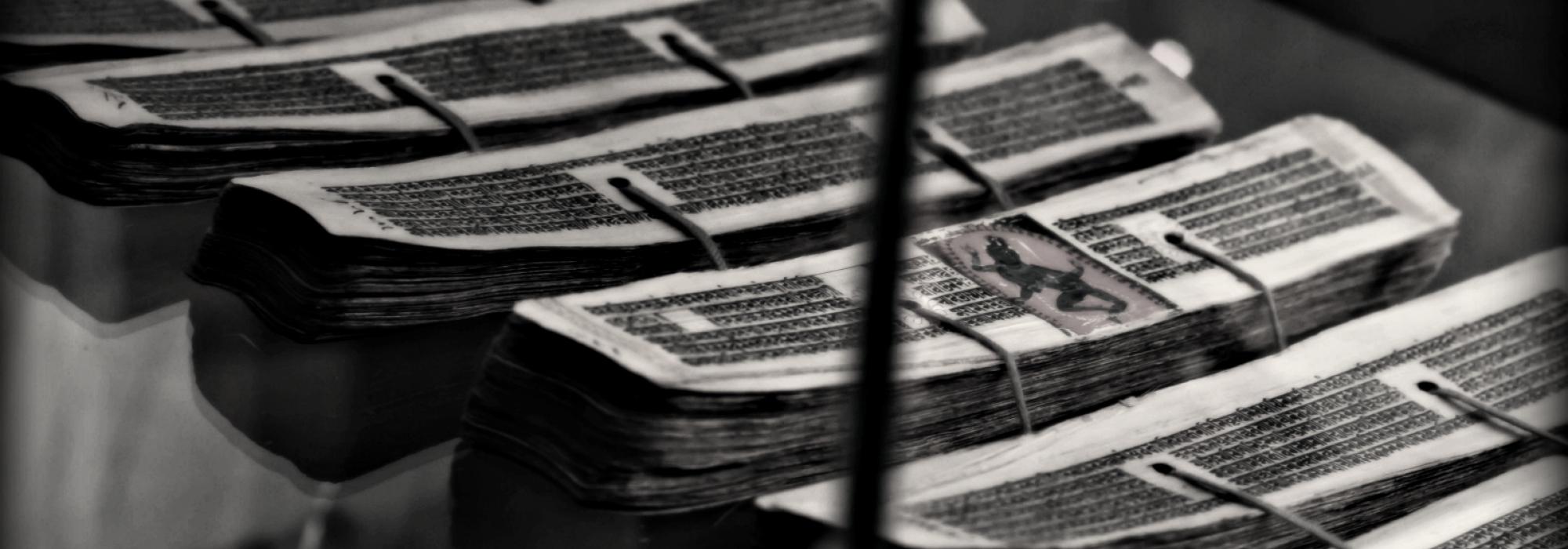Whatever comes next is the crux of the kaṭhopaniṣat. This is where Naciketas asked Yama to answer his question. His question surprised Yama. Not willing to answer that, he tried to convince Naciketas to ask something else as vara. He tries to entice him with different gifts. Naciketas doesn’t budge, he adamantly states that if he wants to give a vara he should answer his question. He ties up Yama with his own words and makes him give away the answer. The conversation between them is intriguing.
Naciketas: Some people say that once a man dies, it is the end, there is nothing after that. Others say that it is the body which dies, there is something else other than the body, i.e. the jīvātman which persists. This is indeed a matter of great confusion. I want to get clarity about this, this is the third vara I ask for.
One should observe an important point here. Previously, in this interaction, we see that Naciketas had spoken in such a manner that he seems to have faith in yamaloka, svarga etc. Therefore here the prime intention is to understand the ultimate nature of life independent of a body. This is confirmed by the answer given by Yamadharma. Just merely stating that there is an ātman independent of the body wouldn’t be a secret.
Yama: Even the devatās are confused in this regard. They have been trying to learn this. The knowledge of the ātman is very nuanced and subtle. It's not easily decipherable. Naciketas ask something else. Don’t be stubborn.
Naciketas: Yamarāja, Didn’t you say that even devatās are curious? You say that it is difficult to know the ātman. But who else other than you, the deity of death, be able to provide clarity on what happens after death? There is no vara which is better than this!
Yama: Ask for a long life of a hundred years, ask for children and grandchildren, ask for cattle, for elephants, for horses. I’ll give you whatever amount of wealth you ask for. I’ll give you a huge mansion to live in. You can live there for however many years you want. Likewise you can ask for anything. I’ll definitely give it to you. Do you want to reign as an emperor controlling the whole world? So be it; I can give that to you. Whatever material opulence is rare on earth you can ask and get it. See these beautiful apsaras women, these divine chariots, these musical instruments from the gandharvas; mere mortals would never be able to get them. I’ll give them all to you. Enjoy them. But O Naciketas, don’t ask me about death.
Naciketas: O Swāmin, Antaka! These are all ephemeral, they are present today but will go tomorrow; what would happen with these material things? They just drain out all the energy of the indriyas. They just destroy dharma, vīrya, buddhi, tejas, kīrti. What’s the use of a long life? Isn't the lifetime of brahman insignificant too? Let all these chariots, danseuses remain with you! Yamarāja! Has anyone found contentment through money? After seeing a noble person like you, I’ve already got everything one can desire. In the mortal realm, whoever sees you will be short lived. Knowing all these, even if one lives a long life, how happy can he be?
So, I’d never ask for such things which are transient. Please teach me the knowledge of ātman and what it says about the existence of para.
By this conversation, it is evident that Naciketas has the capability to attain the knowledge of ātman. The qualification a student should have is such disdain for the things of this world and the next. This is indeed the intense renunciation of the happiness obtainable in this world and the next. The happiness obtained from the (albeit temporary) satiation of sense organs is called preyas. Naciketas abhors preyas. He was desirous of śreyas. That is indeed the mokṣa, the ultimate among the four puruṣārthas. He asked about the nāciketāgni for the sake of others, not for himself.
Now the pupil has been thoroughly examined. He has been deemed to be qualified for the brahmavidyā, Yamadharma, the ācārya of the brahmavidyā, then teaches the ultimate nature of the ātman. In current discourse it can be summarized as follows.
“There is a jīvātman independent of the body. Due to ajñāna (ignorance) it finds itself bound by karma and depending on karma it takes different bodies. Till it assumes that other than this (material) world there is nothing, it keeps coming under my control. This is the result of avidyā. The ātman is eternal and is ubiquitous. It resides in everyone as a witness. It doesn’t possess anything that the sense organs can perceive, i.e. sound, touch, form, taste and smell. It is visible only to the jñānins who can perceive its subtlety. All the vedas eulogize the ātman. Ātman is “अणोरणीयान् महतोमहीयान्” i.e. tinier than the tiniest and larger than the largest. In essence it is not bound by the samsāra. It can’t be attained by logic or inference. Whoever is the recipient of the anugraha of the parāmātman only he can perceive it.” and so on.
Thus Naciketas attained the brahmavidyā under the tutelage of Yamadharma, became a brahmajñānin and a jīvanmukta. Whoever attains brahmajñāna in this manner they escape from the cycle of birth and death.
To be continued...
This is the fourth part of the multi-part translation of the Kannada book "Upanishattina Kathegalu" by Mahamahopadhyaya Vidwan Dr. N Ranganatha Sharma. Thanks to Dr. Sharada Chaitra for granting us permission to translate this wonderful work. Thanks to B. N. Shashikiran for timely and appropriate edits. The original in Kannada can be read here














































